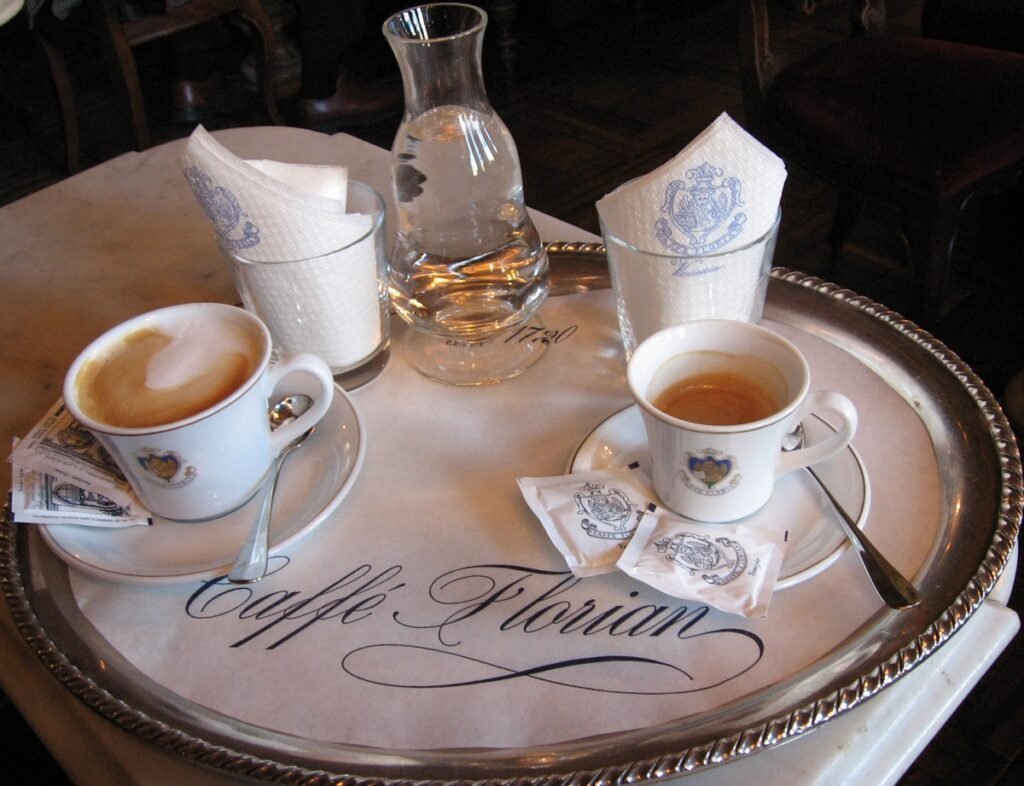
Coffee is not merely a beverage in Italy; it is a cultural phenomenon that shapes daily life, social interactions, and national identity. The rich history of coffee in Italy, its vibrant traditions, and the iconic coffee culture reflect the values and lifestyle of Italians. This exploration delves into the profound impact of coffee on Italian society, highlighting its historical roots, traditional practices, and the unique rituals that define Italian coffee culture.
A Rich History of Coffee in Italy
The journey of coffee in Italy began in the 17th century when it was first introduced through the bustling port city of Venice. As one of the earliest European hubs for coffee trade, Venice played a crucial role in popularizing this exotic beverage. By the 18th century, coffee houses flourished across Italy, becoming social hubs where artists, intellectuals, and aristocrats gathered to discuss ideas and enjoy the rich flavors of coffee. These establishments were pivotal in shaping public discourse and fostering community connections.
The late 19th century marked a significant turning point with the invention of espresso. Angelo Moriondo patented a machine that allowed for the rapid brewing of coffee, laying the groundwork for modern espresso preparation. This innovation transformed how Italians consumed coffee, making it a quick yet flavorful experience. The introduction of espresso at the 1906 Milan International World’s Fair further solidified Italy’s reputation as a leader in coffee culture.
Vibrant Traditions Surrounding Coffee Consumption
Italian coffee culture is characterized by its rituals and traditions that dictate when and how coffee is consumed. For example, cappuccinos are traditionally enjoyed during breakfast hours, often paired with a pastry. Ordering a cappuccino after 11 a.m. is frowned upon as it disrupts the established morning routine. Instead, Italians opt for a simple espresso or caffè macchiato later in the day.
The phrase “Let’s get a coffee!” (Prendiamo un caffè!) signifies an invitation to connect socially. Coffee breaks are integral to daily life, providing moments for conversation and camaraderie. Unlike the “to-go” culture prevalent in many countries, Italians prefer to enjoy their coffee “al banco,” standing at the bar while engaging with friends or colleagues.
Iconic Coffee Drinks and Their Meanings
Italian coffee culture boasts an array of iconic drinks, each with its own significance:
- Espresso: The foundation of Italian coffee culture; ordering “coffee” typically means receiving an espresso.
- Cappuccino: A blend of equal parts espresso, steamed milk, and foam; it symbolizes breakfast indulgence.
- Caffè Macchiato: An espresso “stained” with a splash of milk; it offers a balance between strength and creaminess.
- Caffè Americano: A nod to American soldiers during World War II who diluted their espresso with hot water; it reflects adaptability within Italian culture.
- Caffè Corretto: Espresso “corrected” with a splash of liquor; it embodies the Italian spirit of enjoying life’s pleasures.
These drinks not only satisfy caffeine cravings but also serve as cultural markers that highlight Italy’s commitment to quality and tradition.
The Role of Coffee in Italian Identity
Coffee consumption in Italy transcends mere enjoyment; it is intertwined with national identity. The shared experience of sipping espresso or cappuccino fosters community bonds and reinforces cultural values such as connection, tradition, and quality. The act of drinking coffee becomes a ritual that encapsulates broader Italian values—appreciating life’s simple pleasures while respecting time-honored customs.
Moreover, Italian values emphasize craftsmanship and quality in every cup. The “four M’s” (miscela – blend, macinadosatore – grinder, macchina – machine, mano – skill) illustrate how each element contributes to creating the perfect brew. Baristas are revered for their expertise, reflecting a deep respect for the art of coffee-making that has been perfected over generations.
Regional Variations and Unique Practices
Italy’s diverse regions contribute to unique coffee practices that reflect local customs and preferences. For instance:
- In Northern Italy, particularly in Le Marche, you might find caffè anisette flavored with anise.
- Southern regions like Sicily offer caffè d’un parrinu—a spiced Arabic-inspired brew featuring cloves and cocoa.
These regional variations showcase how local ingredients influence flavor profiles while maintaining core elements of Italian coffee culture.
Coffee as a Social Ritual
Coffee serves as more than just a drink; it is a social ritual that fosters connections among individuals. The communal experience of gathering at local cafés or bars creates opportunities for dialogue and relationship-building. Italians often engage in animated conversations while enjoying their coffee—transforming what could be a solitary act into a shared moment filled with laughter and camaraderie.
This emphasis on social connection contrasts sharply with cultures that prioritize speed over interaction. In Italy, taking time to savor a cup of coffee reflects an appreciation for life’s small joys—a value deeply ingrained in Italian society.
Conclusion: The Enduring Legacy of Italian Coffee Culture
The profound cultural impact of coffee in Italy is evident through its rich history, vibrant traditions, and iconic rituals that shape daily life. From its introduction in Venice to the establishment of espresso as a global phenomenon, coffee has become an integral part of Italian identity. It embodies values such as community connection, respect for tradition, and an unwavering commitment to quality.
As Italians continue to embrace their unique coffee culture amidst globalization, they remain steadfast in preserving their cherished rituals while adapting to modern influences. Ultimately, Italian coffee serves as more than just a beverage—it is an enduring symbol of cultural pride that transcends generations and unites people through shared moments of enjoyment and connection.
